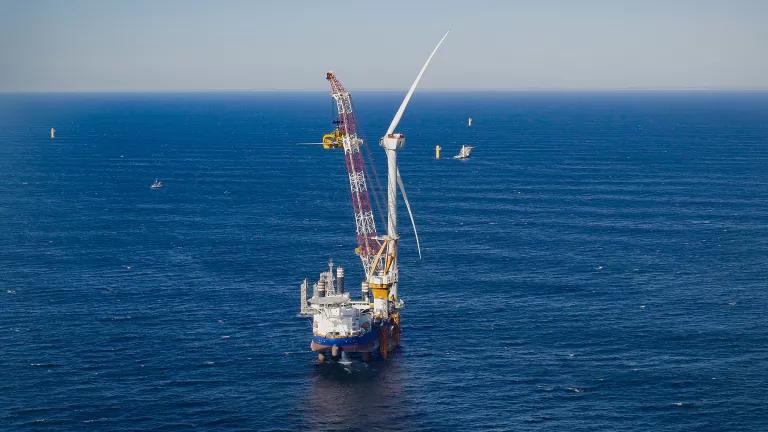US Energy Secretary Must Raise Climate Concerns with Mexico
It's critical for Secretary Granholm to emphasize the importance of climate change for the U.S. and urge her Mexican counterparts to work toward a just energy transition based on sustainable renewable sources.
Two key discussions are taking place in Mexico this week, marking what may be a pivotal point for Mexico’s energy future. On Monday, Mexico’s Chamber of Deputies initiated an open parliament process to analyze and debate a controversial constitutional reform that would return full control of the power sector to the state-owned, fossil-fuel dependent Comisión Federal de Electricidad (CFE). If implemented, the proposed changes would undermine the country’s ability to meet its national and international emission reduction obligations. The start of the open parliament coincides with a visit to Mexico by U.S. Secretary of Energy, Jennifer Granholm. President Biden vowed to put climate at the center of his foreign policy. It’s now critical that Secretary Granholm emphasize the importance of climate change for the U.S. and urge her Mexican counterparts to work toward a just energy transition based on sustainable renewable sources. As environmental, foreign policy and legal groups from the United States, including NRDC, recently wrote to President Biden, “the climate inaction of such a large emitting country would lead to more climate pollution than the world can afford.”
The constitutional reform under consideration in Mexico would, among other things, require CFE to generate at least 54 percent of the country’s electricity. CFE’s power plants are primarily fossil fuel-powered including coal and fuel oil, a high-sulfur byproduct of the oil refining process. According to a recent analysis by the Department of Energy’s National Renewable Energy Laboratory (NREL), prioritizing CFE-owned generation plants could increase Mexico’s annual power sector CO2 emissions by 26 percent to 65 percent. It would also result in SO2 emissions skyrocketing by as much as 256 percent.
The open parliament, which will run from January 17 through February 15, will include participation from a broad range of stakeholders impacted by the proposed reform. Speakers are anticipated to include representatives from federal, state and municipal governments as well as from the civil society and business sectors. The debates will focus on five issues: i) the electric system established under the 2013 energy reform; ii) the State’s role in the electric sector; iii) the goals and results of the 2013 reform; iv) the constitutionality and legality of the proposed 2021 reform; and v) the environment and energy transition. Following the open parliament, the legislators will draft and vote on a decision. During the first day of discussions, diametrically opposite positions were drawn with some arguing in favor of increased CFE participation and others highlighting the limitations of such a system. But as the former head of Mexico’s Energy Regulatory Commision (CRE) points out, “what is really important is not who generates [electricity], but that it be the cheapest and cleanest possible.”
To limit warming to 1.5˚, all countries must do their fair share to limit emissions.
The U.S. must rapidly boost its own climate action, but it must also help lead a global clean energy transition. It should not stand on the sidelines as a key commercial partner rolls back its progress on clean energy. President López Obrador (known as AMLO) announced that during Secretary Granholm’s visit they may discuss proposed changes to the electricity sector and that if “she wants to know my opinion, I will be happy to give it to her.” According to remarks by AMLO in recent months he claims to not be aware of any U.S. government concerns with his plans for the electricity sector. That must change. It’s now urgent for Secretary Granholm to leave no doubt in President López Obrador’s mind that there are serious concerns with energy policies that endanger our shared global climate, contaminate local air and water, and hamper the clean energy transition of North America by favoring dirty fossil fueled power generation over cleaner and more cost-effective solar and wind energy.




